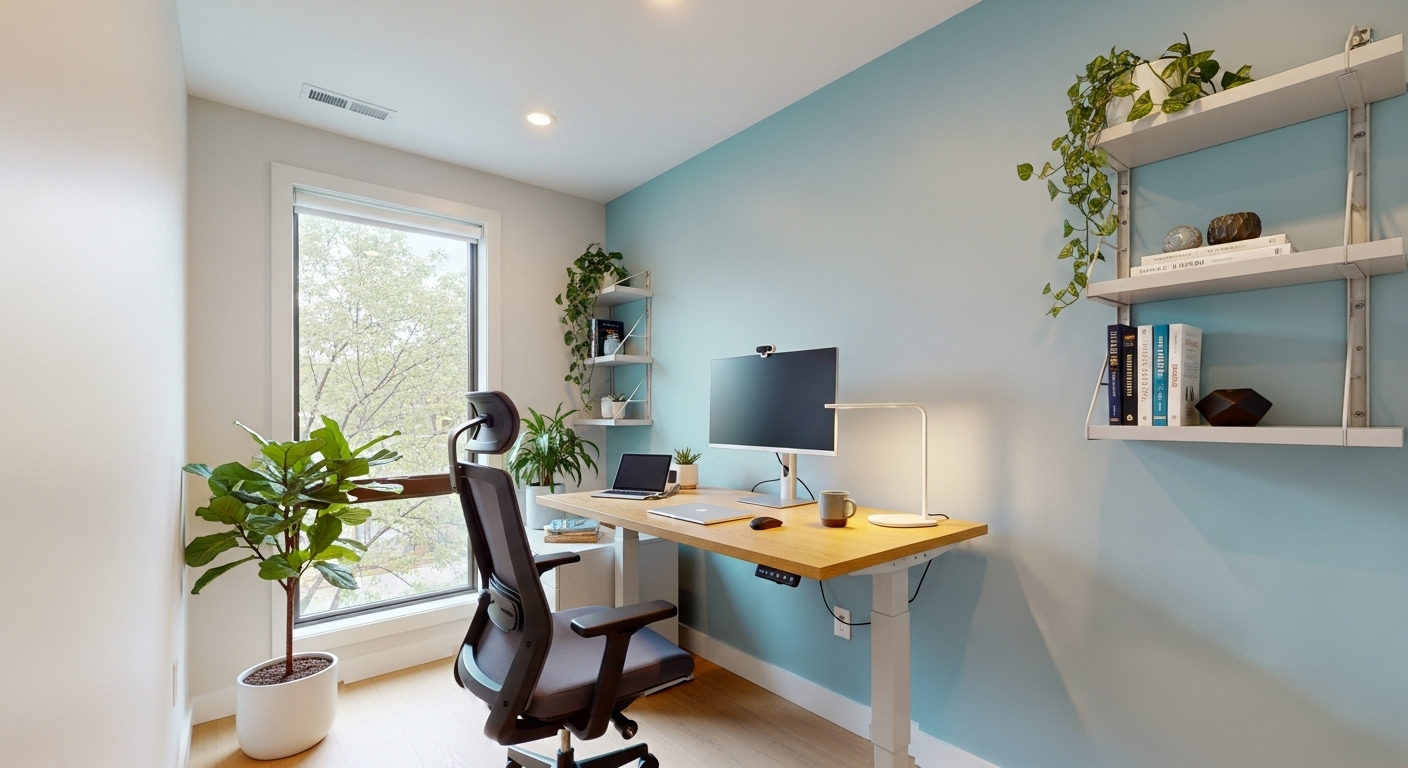Coworking spaces are built on a compelling promise: the vibrancy of a community combined with the flexibility of independent work. They offer a potent antidote to the isolation of working from home and the rigidity of a traditional office. Yet, many professionals find themselves caught in the coworking paradox. The very social energy and collaborative buzz that attracts them can become the primary obstacle to the deep, concentrated work required to move the needle on important projects. Recent industry analysis shows a sharp rise in demand for flexible workspaces, but user surveys consistently highlight noise and distractions as the top complaints. How can you tap into the collective energy of a shared environment without letting it derail your focus? The solution lies not in fighting the environment, but in mastering it. By developing a strategic approach that involves architecting your environment, building distraction-proof routines, and engaging with the community on your own terms, you can transform your coworking space from a source of friction into a powerful engine for productivity. This guide provides a practical framework for resolving the paradox and achieving peak performance in any shared workspace.
Architect Your Environment: Strategic Zoning for Focus and Flow
Your productivity in a coworking space begins the moment you walk in the door, with the simple choice of where to sit. Don’t leave this to chance. The first step in mastering your environment is to practice strategic zoning. This means consciously selecting or creating different spaces for different types of tasks. Many coworking spaces are designed with this in mind, offering a mix of hot desks in high-traffic common areas, quieter dedicated desk zones, private phone booths, and bookable meeting rooms. Learn the layout and energy of your space at different times of day. The bustling cafe area might be perfect for answering emails and administrative tasks for an hour in the morning, while a designated quiet zone is essential for a two-hour block of deep writing in the afternoon. If your space is more of a uniform open-plan layout, create your own zones. A seat in a low-traffic corner can become your default ‘focus zone.’ Furthermore, use physical cues to signal your intent to those around you. The simple act of putting on noise-canceling headphones is a universally understood sign for ‘do not disturb.’ Some professionals even use a small, unobtrusive desk sign to indicate when they are in a focus block. By treating the entire coworking facility as your personal office with different ‘rooms’ for different functions, you move from being a victim of your surroundings to the architect of your own productive ecosystem.
The Power of Ritual: Building a Distraction-Proof Daily Routine
In a traditional office, routines are often imposed. In a coworking space, you must create your own. This freedom is a double-edged sword, and without structure, it can lead to scattered, reactive days. The key is to build powerful rituals that anchor your workday and shield your focus. This starts before you even arrive. Plan your top 1-3 priorities for the day at home, so you walk in with a clear mission and aren’t immediately sidetracked by a friendly chat. Create a ‘startup’ ritual for when you sit down at your desk. This could be a five-minute process of tidying your space, opening necessary tabs, and reviewing your to-do list before checking any email or messages. This signals to your brain that it’s time to work. Time-blocking, particularly the Pomodoro Technique (25 minutes of focused work followed by a 5-minute break), is exceptionally effective in coworking environments. It allows you to commit to short, intense bursts of focus, making it easier to ignore ambient distractions, knowing a break is just around the corner. Crucially, schedule your breaks. Instead of letting a random conversation pull you away, plan to get coffee or take a walk at a specific time. This allows for social interaction and mental resets without fracturing your most important work blocks.
Tech as Your Shield: The Essential Digital Toolkit for Shared Spaces
While coworking spaces are physical environments, your greatest defense against distraction is often digital. Equipping yourself with the right technology acts as a powerful shield for your attention. Noise-canceling headphones are the most obvious tool, but they are just the beginning. To combat inconsistent ambient noise that even headphones can’t block, use focus-enhancing sound apps. Services like Brain.fm provide functional music scientifically designed to improve concentration, while apps like myNoise offer a library of soundscapes, from calming rain to the hum of a spaceship, that can mask distracting chatter. Beyond sound, you must manage digital distractions. Website and app blockers like Freedom or Cold Turkey are essential for enforcing your time blocks, preventing you from reflexively checking social media or news sites. As a study from the University of California, Irvine, found, it can take over 23 minutes to regain focus after a digital interruption.
‘The cost of interrupted work is significant. We found that people compensate for interruptions by working faster, but this comes at a price: experiencing more stress, higher frustration, time pressure, and effort.’
By using technology to create a digital bubble of focus, you insulate yourself from both online and offline interruptions, preserving your cognitive resources for the tasks that truly matter.
Mindful Networking: Engaging the Community Without Derailing Your Day
The community is arguably the biggest benefit of a coworking space, offering opportunities for collaboration, learning, and new business. However, unstructured socializing is a productivity killer. The solution is mindful networking—engaging intentionally and on your own terms. Treat social interactions like any other scheduled activity. Instead of leaving it to chance, plan to connect with people during designated times. Use your scheduled Pomodoro breaks, lunchtime, or the 30 minutes at the end of your day to be open to conversation. Attend the official community events, like happy hours or lunch-and-learns, which are specifically designed for networking. This compartmentalizes your social time, allowing you to be fully present when connecting with others and fully focused when working. It’s also vital to learn how to politely exit a conversation when you need to return to a task. A simple, respectful script works wonders: ‘It’s been great catching up, but I have to get back to this report before my 2 PM deadline. Let’s continue this over coffee later?’ This values the connection while protecting your work block, which most professionals in a coworking space will understand and respect.
Setting Digital and Physical Boundaries: The Unspoken Rules of Coworking
Productivity in a shared space is a collective responsibility. By setting and respecting clear boundaries, you not only protect your own focus but also contribute to an environment where everyone can thrive. Physically, this means being mindful of your own noise levels. Always take phone calls or video meetings in designated phone booths or private rooms. If you need to have a quick collaborative chat with a colleague, move to a common area or breakout space rather than doing it in a quiet zone. Keep your personal items contained to your own workspace, avoiding ‘desk sprawl’ that can encroach on your neighbors. Digitally, boundaries are just as crucial. Use the status features in your communication tools like Slack or Microsoft Teams to signal your availability. A ‘Focusing’ or ‘Heads Down’ status, paired with muted notifications, manages colleagues’ expectations and prevents a constant stream of pings from breaking your concentration. These small acts of etiquette create a culture of mutual respect, establishing an unspoken agreement that focus time is valuable and should be protected for everyone, making the entire space more productive.
Leveraging Amenities: From Meeting Rooms to Mental Breaks
Top-tier coworking spaces offer a suite of amenities that are often underutilized as productivity tools. Don’t view these as mere perks; see them as strategic assets for optimizing your day. The most valuable of these are often the bookable, private spaces. Be proactive. If you know you have a critical report to write or an important client call, book a private office or meeting room in advance. The guaranteed privacy and silence are worth the small effort of scheduling. This eliminates the uncertainty of finding a quiet spot and allows you to fully immerse yourself in the task at hand. Similarly, leverage the wellness amenities. Many spaces now offer meditation rooms, fitness centers, or even quiet lounges. Scheduling a 15-minute session in a wellness room can be far more restorative than scrolling through your phone at your desk. Use the coffee bar or kitchen as a destination for a planned break, giving you a change of scenery and a mental reset. By integrating these amenities into your structured routine, you’re not just avoiding distractions; you’re actively using the facility’s design to enhance your focus, creativity, and overall well-being, which are the foundational pillars of sustained productivity.
Ultimately, the coworking paradox is not a problem to be solved but a dynamic to be managed. Thriving in a shared workspace is an active skill, a deliberate practice of designing your day with intention. It requires moving beyond a passive acceptance of the environment and becoming an active architect of your own experience. By strategically zoning your workspace for different tasks, building a resilient daily routine, and wielding technology as a shield for your focus, you lay the groundwork for deep work. By layering on mindful networking and clear boundaries, you can access the rich community benefits without paying the price in lost concentration. Finally, by leveraging every amenity as a strategic tool, you transform the entire space into a personalized productivity engine. When you master this balance, the paradox dissolves. The collective energy no longer competes with your concentration; it fuels it. The background buzz of activity becomes a motivating hum, reminding you that you are part of something larger—a community of professionals all striving to do their best work, together.





